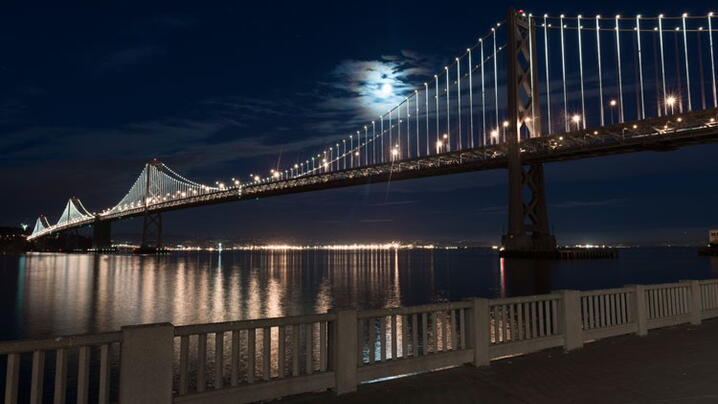
Susanne Seitinger, PhD, public sector marketing lead, Philips Lighting
Lighting is an essential part of the urban landscape and directly contributes to the socio-economic prosperity of a community. As the power of light and technology have evolved, it can also play a more strategic and integral role to spur economic development, tourism, and long-term planning.
Local government leaders are turning to digital and networked technology to improve the quality of life and safety in their communities. This ranges from online access to civic services and mobile apps driven by publicly available data to potholes that Tweet, plus Internet-enabled trash cans that send an alert when they are full. The proliferation of LED lighting is converging with these digital technologies, providing new opportunities to enhance how people see and experience public spaces. When used in creative ways, lighting is a powerful catalyst for new economic activity and vibrant public spaces that drive tourism and revitalize entire communities.
To help support your local government’s initiatives, here are four steps you can take to make lighting work as a strategic tool and cast it in a new light.
1. Include Lighting Design Early in the Planning Process. Light is no longer limited to on/off functionality. It a simple and immediate way to reap the benefits of cost-cutting and energy savings while enhancing neighborhoods to support vibrant local life, nighttime economies, and tourism. With the integration of connected technologies and dynamic controls, early planning enables new opportunities to use light to enhance public space.
2. Integrate Dynamic Lighting with City Life. The Minnesota Department of Transportation recently completed an upgrade to a connected LED lighting system that allows the 1,907-foot I-35W Bridge to put on special light shows tailored to themes of specific holidays, important civic causes, and special events, including most recently, one of the largest sporting events in the world. The iconic bridge is a vital link for commuters and truck freight traveling across the Mississippi River into Minneapolis. With the addition of spectacular light shows and dynamic effects, a mechanism of transportation infrastructure is transformed into an iconic light sculpture that reflects the energy of the region.
San Francisco’s Bay Lights project, created by Leo Villareal, uses lighting to provide a distinctive experience for the city’s estimated 50 million visitors while uniting them in one shared focal point. The illuminated artwork—reinstalled in 2016—was projected to contribute $97 million to the local economy. The online presence of the project, which includes thousands of Instagram photos posted by visitors, testifies to the high degree of public engagement the project has achieved.
Ivan Toth Depeña’s light-based installation "Reflect," located in the Stephen P. Clark Government Center in Miami, Florida, shows how everyday spaces can be a source of delight. Pittsburgh’s Gulf Tower was revitalized with a new and elaborate ambient light show that communicates weather data subtly and elegantly.
3. Lighting Captures a Community’s Brand. Light is a tool for communication and can be linked with branding for neighborhoods, venues, and other exciting and unique features of an area. Regions Field in Birmingham, Alabama, renewed its identity with dramatic signage lighting. The I-35W Bridge in Minneapolis also reinforced the region's branding on “Bold North,” using a light show that mimics the natural wonder of the Aurora Borealis. It celebrates Minnesota as one of the few areas in the contiguous United States where visitors can experience the Northern Lights.
4. Measuring Success. The Big River Crossing is a bike and pedestrian path that spans the entire length of the Harahan Bridge connecting Memphis, Tennessee, and West Memphis, Arkansas. It opened in October 2016, and already hundreds of thousands of people have traversed the Mississippi River, attracted by the dynamic lighting shows on the bridge that have given new energy to the downtown and riverfront areas.
To more accurately quantify the impact of the Big River Crossing, its marketing team not only tracks how many visitors the bridge draws but also how people experience it. For example, tens of thousands of likes, check-ins, and hashtags on social media have been documented showing people’s affection and appreciation for the bridge and the activities surrounding it. Since its debut, the bridge has also been featured in more than 150 press articles, spanning both local newspapers and national media, including The Huffington Post and Fast Company.
Increasingly, communities are tracking and reporting publicly on these kinds of quantitative outcomes. Partners are more willing to contribute if they can tangibly see the results of their collaboration. In complementing the unpredictable and surprising nature of urban life, networked lighting can contribute to that tracking in nearly real-time, further contributing to the pulse of a community.
Learn more about the economic development benefits of LED lighting at http://applications.nam.lighting.philips.com/blog/index.php/2016/06/29/impact-evaluation-and-analysis-ambient-light-empowers-places.
Philips is an ICMA strategic partner who is a global leader in lighting products, systems, and services.
Related Resources
Timing Is Everything. This 2017 PM article demonstrates the importance of arts programs as an investment for smaller communities.
5 Ways to Beautify Your Community. A blog post from 2016 focused on how to beautify a community, including the importance of public art.
5 Resources on Downtown Revitalization. This 2015 blog post gives resources on how to revitalize downtown.
New, Reduced Membership Dues
A new, reduced dues rate is available for CAOs/ACAOs, along with additional discounts for those in smaller communities, has been implemented. Learn more and be sure to join or renew today!
